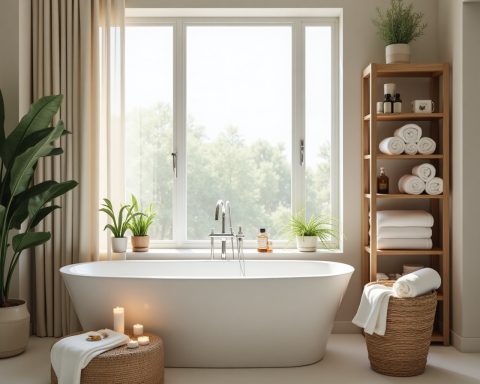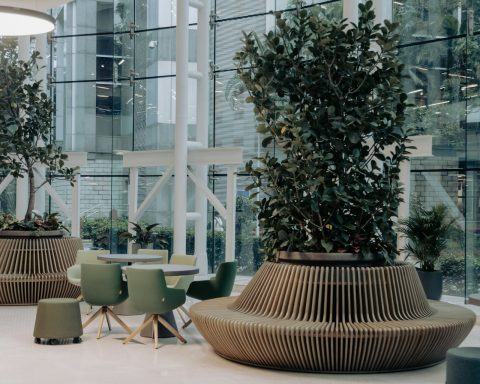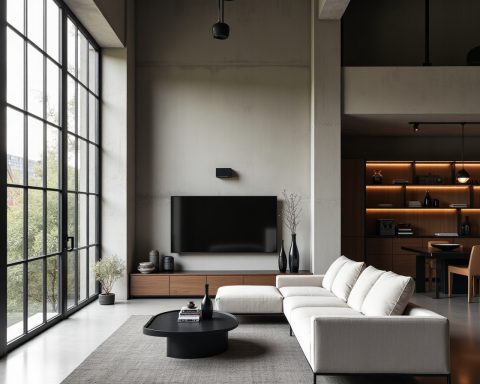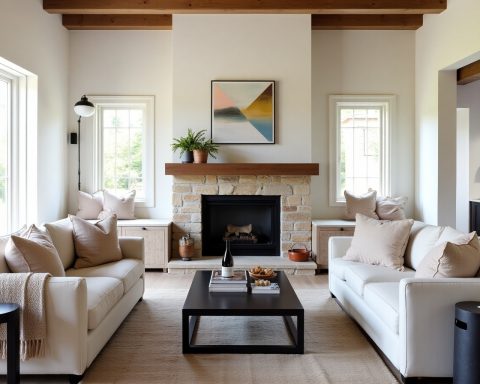In today’s interior design landscape, we are witnessing a powerful resurgence of classical architectural elements seamlessly integrated into contemporary spaces. This fusion of old and new not only preserves the beauty of timeless traditions but also breathes fresh life into modern homes. The result is a harmonious balance that showcases elegance, warmth, and sophistication. As designers strive to create unique yet meaningful spaces, the revival of classical design cues has become an intentional, aesthetic, and philosophical choice.
The Return of Classical Elegance in Contemporary Homes
Modern interiors are no longer defined solely by minimalism and stark simplicity. Today’s spaces embrace ornate details, symmetry, and grandeur reminiscent of classical architecture. Features such as arched doorways, decorative cornices, pilasters, ceiling medallions, and wainscoting are finding their way back into homes—but with a refined, updated approach.
These elements are no longer merely ornamental; they are reimagined to suit modern functionality. For instance, Roman-inspired columns may now frame open-concept spaces, giving structure and character without overpowering the clean lines of modern design.
Molding and Millwork: Craftsmanship Reborn
The resurgence of intricate molding and custom millwork signals a return to craftsmanship and detail. Crown moldings, baseboards, and chair rails are being used to define and elevate rooms, adding depth and dimension to otherwise flat surfaces.
Contemporary designers are opting for subtle versions of these traditional features—using clean, geometric lines or bold, oversized proportions to modernize the aesthetic. This interplay of past and present ensures that such details enhance rather than overwhelm the overall composition.
The Role of Natural Materials in Bridging Eras
Natural materials play a crucial role in this design evolution. Elements like marble, wood, and stone—all hallmarks of classical architecture—are being reincorporated into contemporary interiors. Think marble fireplace mantels paired with minimalist furniture, or herringbone oak floors beneath sleek, modular cabinetry.
These materials bring warmth, authenticity, and tactility, anchoring modern interiors in the enduring beauty of the past. The trend celebrates organic textures and elevates them with modern finishes, ensuring they remain relevant and stylish.
Arches and Curves: A Soft Revival
One of the most visually striking revivals is the use of arched elements. From doorways and windows to mirrors and built-in shelves, curved forms evoke classical architecture while adding softness to modern spaces.
Arches inherently represent continuity and transition—both conceptually and spatially. In contemporary design, they break the monotony of sharp angles and introduce a sense of romance and sophistication. When paired with modern materials like glass, metal, or concrete, the effect is nothing short of stunning.
Ceilings as Canvases: From Flat to Fabulous
The ceiling, once a neglected plane, is now a vital player in the design narrative. Coffered ceilings, exposed wooden beams, and decorative plasterwork are making triumphant returns. These once-historic features now serve as architectural focal points, adding height, drama, and an air of regality.
Modern interpretations often use monochromatic palettes or indirect lighting to keep things grounded while highlighting the three-dimensional craftsmanship. This transforms ceilings from mere overhead structures into immersive design elements.
Fusion of Classical Symmetry and Modern Asymmetry
A core tenet of classical architecture is symmetry and proportion, deeply rooted in Greek and Roman philosophies of beauty and harmony. Contemporary interiors, known for embracing asymmetry and open plans, now smartly balance the two principles.
Designers are using symmetrical frameworks—like evenly spaced wall paneling or centered fireplaces—as anchors, while juxtaposing them with asymmetrical furnishings or abstract art. The result is a visually balanced and emotionally engaging environment that feels both timeless and fresh.
Lighting Fixtures: Nostalgia Meets Innovation
Lighting plays a pivotal role in bridging traditional and modern aesthetics. Chandeliers, sconces, and pendant lights with classical silhouettes are being updated with modern finishes like matte black, brushed brass, and smoked glass.
A Rococo-inspired chandelier may now hang in a minimalist dining room, acting as a bold contrast and centerpiece. This approach preserves the emotional gravitas of classic lighting while enhancing the functional demands of contemporary living.
Color Palettes That Echo the Past with a Modern Twist
Neutral tones continue to dominate modern design, but now they are being enriched with earthy, muted, and historic hues. Shades like terracotta, olive green, navy, and ochre—often seen in classical interiors—are reappearing with desaturated, modern finishes.
These palettes create a sense of continuity and calm, making them ideal backdrops for both antique and modern furnishings. The blend allows spaces to tell a story, honoring the past while embracing current aesthetics.
Modern Furniture, Classical Context
The integration of contemporary furniture within classically inspired interiors showcases the duality of design. Clean-lined sofas, Scandinavian chairs, or industrial-style tables can coexist with ornate moldings, vintage mantels, and carved wooden doors.
This interplay allows homeowners to express individuality without compromising on elegance. It emphasizes that good design is not about choosing between old and new, but about masterfully blending both.
Why This Design Philosophy Matters Today
The trend toward merging classical and modern elements reflects a collective desire for meaning, authenticity, and timeless beauty. In a fast-paced, digital age, these designs offer familiarity and groundedness—reminding us of the craftsmanship, heritage, and attention to detail often lost in mass-produced modernity.
Moreover, this approach to design speaks to sustainability. By restoring rather than replacing, and integrating antiques or repurposed architectural details, we reduce waste and preserve history. These choices make a bold statement about the future—one where aesthetics, story, and purpose are deeply intertwined.
Conclusion
The revival of classic architectural elements within contemporary interiors is more than a passing trend—it’s a renaissance. It pays homage to centuries of design wisdom while innovating for the present and future. This sophisticated blend of tradition and modernity results in homes that are not just beautiful, but rich with character, depth, and enduring appeal.









